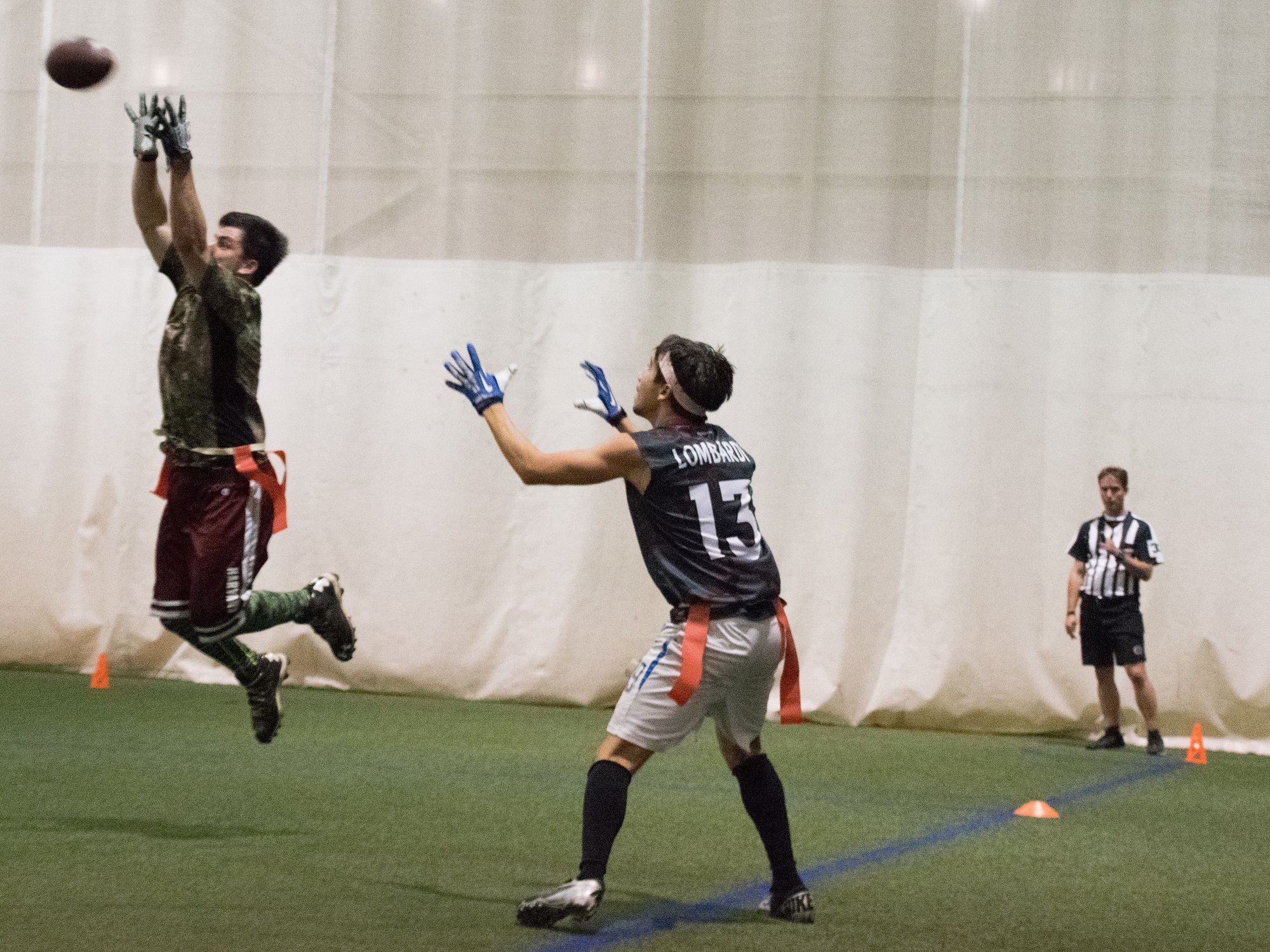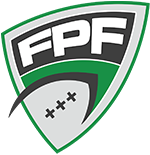Behind Enemy Lines: Defensive Pass Interference

Hello all, thanks for reading this week’s article, covering the always controversial topic of defensive pass interference, or DPI.
Our last article covered illegal contact on a receiver, outlining what was allowed and disallowed prior to a pass being thrown by the quarterback. Once the ball is in the air, illegal contact can no longer be called, but rather any illegal action by the defense on the target receiver will be considered DPI. The penalty for DPI is an automatic first down at the point of foul, or the 1 yard line if it occurs in goal.
Let’s start by saying that this is a non-contact league. We know we have a lot of current or former tackle football players in league so it is necessary to state that contact which occurs as the ball arrives which is legal in tackle football is not legal in FPF. Any contact which is not deemed incidental will be penalized as unnecessary contact or unnecessary roughness despite not falling into a specific DPI category… even if you touch the ball first. Be in control at all times for everyone’s safety.
Now that that is out of the way, let’s talk about DPI. An easy way to think about DPI is that both the receiver and the defender have EQUAL, yes equal, right to the ball. However, a defender cannot initiate contact or materially impact a receivers ability to catch a pass through interference, sometimes even without any contact at all. Doing so can result in a DPI penalty. The standards for what is allowable tighten up as soon as that ball is in the air.
A few key concepts for DPI:
1) The pass must be catchable. So any pass thrown into the curtain or into the stands will not result in a DPI penalty. Remember last week we spoke about impact on the play? If the receiver couldn’t catch the pass without the interference then we can deduce that the interference did not impact the play. That said, however, FPF officials are not asked to measure speed, distance, and velocity or the like in complex math formulas in order to determine whether a pass is catchable. So if a receiver is grabbed and held for a couple of yards slowing him down and the ball then lands 15 yards further, in the field of play, our officials and not going to start determining if the receiver could have gotten there or not. Besides, how can anyone tell? Point is, it doesn’t matter and it’s a penalty – don’t complain, next time don’t hold.
2) The defenders DO NOT need to play the ball. They don’t need to turn for the ball. So if a defender is running and the ball hits him in the back, is not a penalty. But if they aren’t playing the ball, defenders cannot initiate any contact or otherwise interfere with a receiver who is playing the ball.
3) DPI is all about positioning. If a defender and receiver are running side by side, positioning is equal. So, if for example, accidental feet tangling cause both players to fall, then no penalty will be assessed. If the defender is a step behind the receiver, or in a “trail position” and there is incidental feet tangling, completely accidental in nature, this IS a penalty for DPI! Why? Because the receiver got position on the defender by getting a step ahead and the feet tangling took away that advantage = penalty. Switch the roles for a second and the defender has a step on the ball and the receiver accidentally tangles feet, that would be OPI.
So officials have to assess in a fraction of a second all of these key concepts and make a determination as to whether or not an advantageous position was compromised by a player who may or not be playing the ball, hindering a receiver’s ability to catch an otherwise catchable ball. Sounds easy enough doesn’t it?
How about we look at some other controversial scenarios. In the world of officiating, DPI without contact is called “screening”. A defender who is not playing the ball and trailing the receiver CAN legally, at the last second, throw his arm or arms up to deflect a ball away from a receiver even if they don’t turn for the ball. If the ball hits their hand, we suggest that this is good timing and good defense which will not be penalized. The defender, however, cannot throw their arms up for a couple of steps hoping it eventually arrives, if such an action hinders the receiver’s vision or ability to play the pass, that would be screening even if no contact is made. The key difference in what is legal and illegal is an element of time. A defender cannot run several steps with their arms flapping, while shooting their hands up at the same moment that the ball is arrives is perfectly legal.
And our personal favorite, we have saved the best for last: playing “through” a receiver. At no time can a defender play through a receiver, even in a bonafide attempt to get to the ball. This is illegal because, by very definition, if you have to go through a receiver it’s because they have a favorable position compared to you and the ball. Even if this contact occurs at the precise second the ball arrives it’s still a penalty. If the defender makes a great “shoot” and clips the front shoulder of the receiver as they get to the ball even a fraction of a second before the receiver would have, it’s a penalty! Crazy, I know, but you have to work to get into position without playing through the receiver.
Keeping on the same topic, let’s discuss why this would be a penalty. A defender is sitting in a zone, reads the quarterbacks eyes and aggressively shoots to the target area of the pass. The defender is playing zone so they are locked in on that ball and coming hard. As they reach forward to knock that sucker down, the unsuspecting receiver who is running their square in route collides with the oncoming defender. The receiver had established a path, was in a favorable position to catch the ball. The defender, while 100% playing the ball, accidentally plays through the receiver he didn’t even know was coming…why is this a penalty? The defender is entitled to play the ball, as we said earlier, with the caveat that once the ball is in the air they cannot get to the ball by running through a receiver, even if the receiver only just got to that area. Does this make sense?
Now, we aren’t complete fun ruiners… if the defender and receiver arrive at the point of the ball, coming at different angles and there is a bump of bodies at the tip of that triangle (receiver from one angle, defender from a second, ball from a third) at the precise moment the ball arrives = legal play with no penalty as the positions are equal, no one played through anyone, and no advantage was had and lost in this case. So a triangle play at the moment the ball arrives is not a penalty, however playing through is.
There you have it for DPI! Next week, the next passing foul is OPI and pick plays, hope you tune in then! Thank you for reading!


